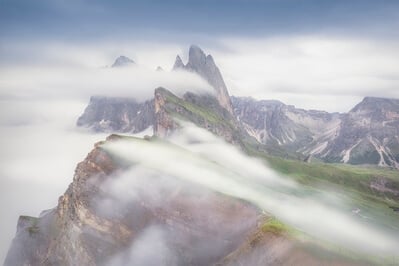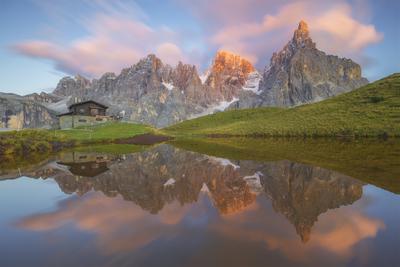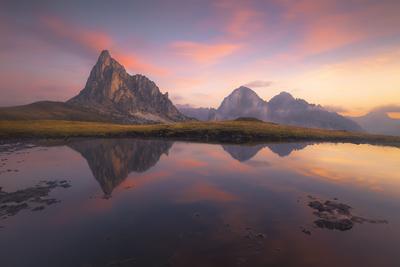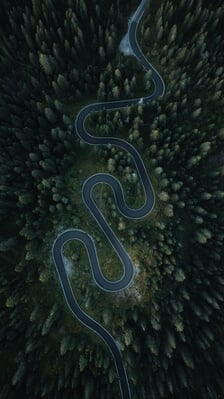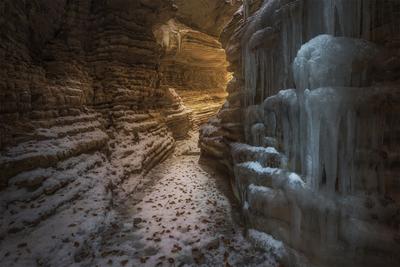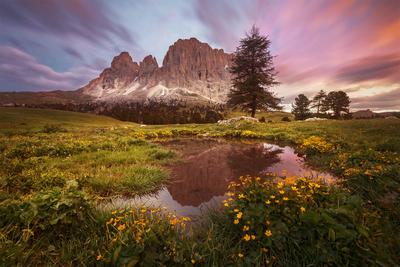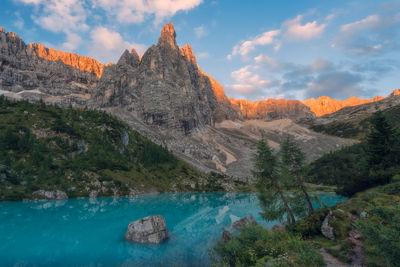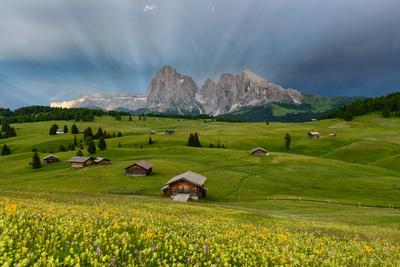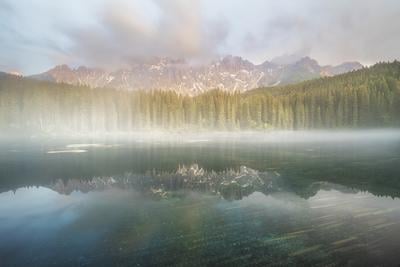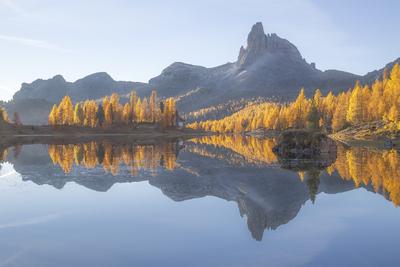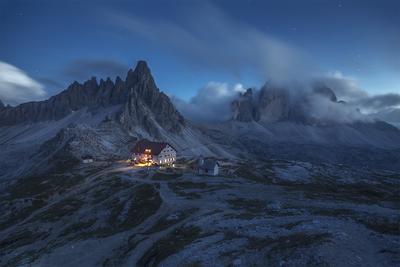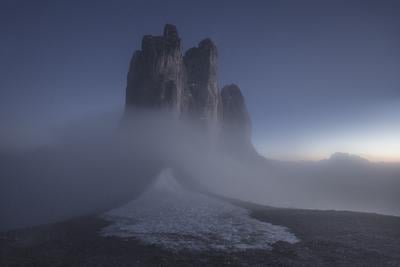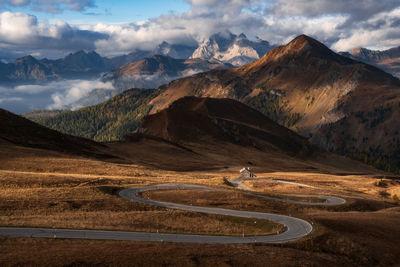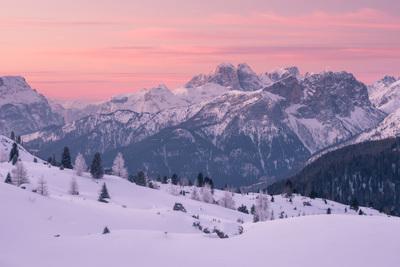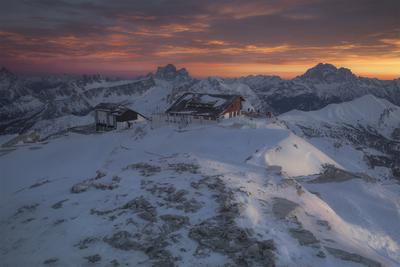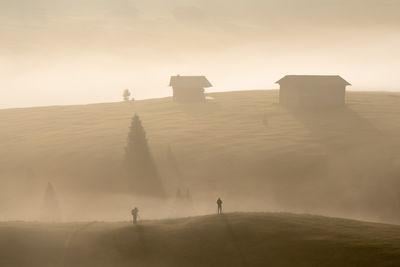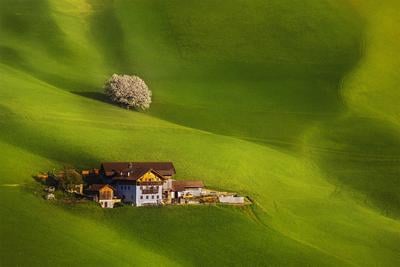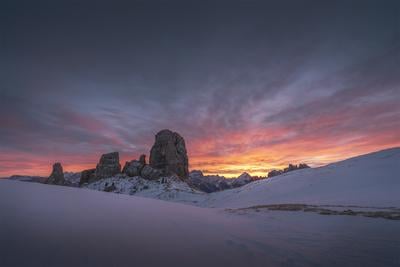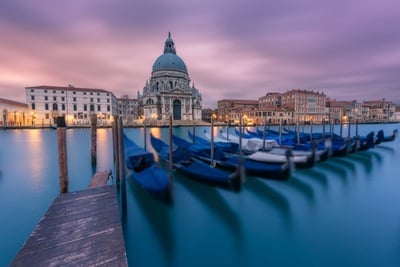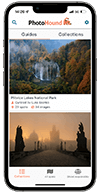The photography guide to
 The Dolomites
The Dolomites
The Dolomites photography guide
Our contributors have added 96 photo spots to this The Dolomites photo guide. Have you discovered an amazing new location in The Dolomites?
Introduction
The Dolomites is an Alpine region located in the north of Italy, close to the borders of Austria and Switzerland. The closest international airport is Venice Marco Polo and this is the recommended place to fly in. The Dolomites are also close to Innsbruck (Austria) where there is another international airport.
This guide roughly focuses on the area between Bolzano, Belluno and the Austrian border.
The area is fast becoming the place to photograph landscapes in Europe and it’s no great surprise - there are some majestic mountains to be found and they are easy to get to.
In this guide you will find a variety of locations:
- Easy shots (from the mountain pass, roadside, lake shore..)
- Some more challenging locations that require hiking
- Iconic churches and traditional shepherds’ huts
- Dramatic mountain views and beautiful lakes with mountain reflections
- More intimate scenes good for capturing wildflowers, rivers and waterfalls
This guide does not include towns or urban areas, however there are some amazing cities worth visiting and photographing, including the likes of Bolzano, Bressanone, Brunico, Cortina D’Ampezzo and Belluno. Many spots in these cities can be found in PhotoHound so check the world map if you want to know more.
Most popular The Dolomites photo spots
Driving in the Dolomites
The Dolomites are easy to get around. The roads are fantastic; well maintained and driveable most of the time even in winter. One thing to keep in mind is that even though distances are short, it will take longer than usual to get from A to B due to winding mountainous roads, scenic views that cause people drive slowly and stop often, plus volume of traffic at peak times.
In summer there are tourists everywhere driving cars, camper vans, motorcycles and bikes. Be especially watchful for cyclists and motorcyclists as they can drive like crazy and sneak up behind you or drive around the bend on your side of the road. It’s also not unusual to encounter cows or sheep on the road.
In winter the roads are well maintained and dry most of the time. Many smaller roads are closed or driveable with snow chains and all-wheel drive only. Winter is still busy because of skiing.
Some mountain roads have road tolls (most notably Tre Cime road) and some smaller roads are open only at certain times of the day (Alpe di Siusi for example is closed to private vehicles from 9am to 5pm). Some roads are open only for people with reservations at the mountain huts or hotels they lead to.
Chairlifts and Gondolas
The Dolomites have an extended network of gondolas, funiculars and chair lifts that allow for easy access to the most amazing photo locations. It is super easy to use them (as long as you are comfortable with heights) - most of the places have convenient places to park and facilities (cafeterias, restrooms, shops, storage rooms).
There are two key seasons when these facilities operate, summer - roughly June to mid October - and winter - roughly December to March. When planning your trip check each place individually for opening season.
The operating hours are not ideal for photographers. Most of the time they open well past sunrise and close well before sunset. To get the most out of your photography plan to stay overnight at a mountain hut nearby or opt for walking in one direction (careful in the dark!).
Most of the time it is okay to purchase tickets on spot (prices go from a few Euros to well over 30€) Always make sure you pay want you want (one-way or return).
Hiking
Hiking in the Dolomites is one of the most popular things to do and it combines wonderfully with photography. Most of the time an easy to moderate hike will get you away from the masses and give you a different perspective to the well-photographed views.
The Dolomites have a wide range of hiking trails and they are all well marked. There is a clear distinction in difficulty so you know what to expect. Via Ferrata trails are more demanding and require special equipment, but are great fun to do if you are well-prepared.
It’s advisable to check online resources prior to your hike to learn what to expect. Whilst PhotoHound can show you precise photo spot locations and trails are well marked, it is still advisable to have a topographic map with you. The best maps (paper and app) are Tabacco - see links section.
Mountain gear is recommended even if you’re only doing light hiking. Proper boots (preferably water resistant), hiking clothing, gloves and cap (in summer too!), a wind and rain proof jacket are a necessity. Hiking poles can be very useful if hiking long distances and crampons and ice-axe for snow conditions. A head lamp is highly recommended for photographers. Most of the gear can easily be purchased in any tourist town, but expect to pay premium prices (unless you hit it lucky with the sales!).
Snowshoeing and back-country skiing are the way to get around in winter, but don’t worry you will still get amazing shots in winter even if you only stick to the mountain roads and ski resorts!
Accommodation and Mountain Huts
The Dolomites are known for tourism and accommodation is readily available in every town. The variety is also great; from basic campsites, to apartment buildings and high end family run hotels with their own spas. The prices vary widely accordingly so it’s worth shopping around. You can visit the Dolomites on a budget using self-catering apartments (this is the most economical if 3-5 people share); you’ll find many listed on websites online with instant booking. Some of the most expensive areas are Alpe di Siusi, Val Gardena area, La Villa.
Seasons play a big part with accommodation too. Many hotels close down in spring and autumn meaning there will be fewer options but if you have a car this is not a big obstacle.
One of the best experiences and also very convenient for photographers is staying in a mountain hut (rifugio in Italian). Sleeping at a rifugio puts you in the middle of the most beautiful scenery and it usually means you are just a few steps from your early morning shooting location Most rifugios are open in summer and winter only (check individually). It is necessary to book rifugios in advance as they tend to fill up quickly. Relying on luck to find available beds on arrival is not recommended. Unlike many other European countries where they will let you sleep on the floor, this is not the case in the Dolomites. Some rifugios have great websites with online booking while many still only have outdated website in Italian only and the way to book is to call. Many rifugios offer a half-board service and the food is amazing. Sometimes you feel like you’re in a fine restaurant rather than a modest hut on top of the mountain! Check with the rifugio if you need to bring your own linen - most offer this as a part of the package or for an extra charge. Electricity in rifugios can be patchy. While they have it for their own needs many rifugios don't have enough power sockets to accommodate everyone so do bring extra batteries and a power extension with multiple plugs. Wifi is available at some rifugios and usually not very fast. It is better to have a mobile data plan but even this is sometimes not available in very high mountains. If you are a member of the Alpine Association of your country most rifugios will offer you a discount on accommodation so take your membership card with you. If you are not a member, consider joining - besides discounts at rifugios, the insurance alone is worth the cost of the membership.
Culture, Language and Etiquette
English is widely spoken around the Dolomites. This said, Italian speaking parts of the Dolomites will be easier to get around if you know some basic Italian words (restaurants especially). The South Tyrol (roughly the part of Dolomites closer to Austria) is predominantly German speaking, but everyone speaks Italian too. Here English is more widely understood. Some parts of the Dolomites (areas around Ortisei, La Villa and wider) are the heart of the Ladin speaking population. This is a Romance language that is closer to Italian than German and can be heard when locals talk to each other.
Regardless of the language, this is a typical Alpine culture and a different experience to the more known southern Italy. Harsh mountain life defines the people and their lifestyle; they are hard working, a little reserved at first but very warm and welcoming too. The food is calorific and filling but delicious. It’s perhaps a bit more orderly than you would expect from your typical Italian vacation.
The best way to meet locals is to stay at private, family-run places. There is a plethora of options, small boutique hotels, tourist farms, apartments. Most of the hosts will be quite knowledgeable about their area and can give you some good advice on where to go.
Some places have become so popular with tourists that local life suffers from too many interactions. A good example is Val di Funes, especially the two iconic spots, the view of Santa Maddalena church and the little San Giovani church. It is therefore very important to respect local rules; don’t trespass to get the shot, stick to the roads and only drive where it’s legal. Even if you witness inappropriate behaviour, it doesn’t mean it is okay to do the same. The opposite is true, so be a role model and follow the PhotoHound responsible photography guidelines.
In general, people in the Dolomites are true tourism professionals and are very open to different cultures. As long as there’s respect from both sides, the travel experience will be amazing.
Photographing Nature Responsibly
The Dolomites area is predominantly an Alpine environment and one of the most fragile in the world. This said, there is a lot of human intervention already, mountain huts, ski resorts, chairlifts, hiking trails, roads, towns and villages, mountain pastures. There are relatively few pockets of true wilderness and most of it is hard to access.
The last thing that nature needs there is more impact from us photographers. So let’s respect the principles of Nature First, and remember to follow PhotoHound’s Code of Responsible Photography.
Some specific tips that apply in the Dolomites; many spots in this guide are located in Alpine meadows where cattle graze in summer, or on ski slopes in winter and on hiking trails in summer meaning there is already a lot of impact on nature for different reasons and activities. At times this means it can be okay to go a little bit off the trail for photography where common sense applies. For example it certainly is not okay in spring / summer to walk into a field of wildflowers and trample them down even though in winter you might venture onto the snow covered meadows.
Swimming or washing cutlery or clothes in wild alpine lakes is strictly prohibited. This can bring harmful microorganisms or too many nutrients into the water which could destroy the fragile balance in the lake.
Seasons & When To Go
The best season to visit the Dolomites for photography is autumn, roughly from mid to end of October. This is usually prime time for the yellow larch trees. Autumn also gives you a more moody atmosphere with morning mists, low sun and more peace and quiet in general. Autumn is considered off-season in Dolomites - most of the chairlifts and rifugios are closed, there are fewer hotels and restaurants open. It is also more relaxed with road rules - many roads that are closed in summer are now open to drive throughout the day, but it is best to check beforehand.
Winter can be amazing as well, with snow covered mountains, forests and frozen lakes. Many places are surprisingly easy to access due to excellent roads and ski resorts. You can often take chairlift up the mountain to capture a sunset and take the last one down to the valley. An even better option is to stay at a mountain hut overnight. It is possible to get great photos without venturing into deep snow using snowshoes or backcountry skis. If you do, make sure you know where you are going - avalanches can be a great danger! The easiest thing to do in winter is to photograph from the mountain passes. Some of the best are Passo Giau, Falzarego, Valparola, Gardena and Sella. Make sure you have winter tyres and snow chains in your trunk. Many mountain hotels or rifugios will offer a parking service in the valley (or close to the road) and a transfer to the hotel/rifugio if you stay with them.
Spring is arguably the least interesting season for photography - at least until the trees and meadows turn green. It’s possible it will still be snow covered in May so it pays to be prepared for winter conditions and have warm clothes, proper shoes and snow chains in your car. Mid to late May is usually nice and, if lucky, you can find the first of the wildflowers. Daffodils are the flowers of the season.
Early summer is another beautiful season to visit the Dolomites. June and early July are particularly good with the wildflowers in bloom and before the summer crowds arrive. Mountain pastures are at their most beautiful at this time of year. Keep nature in mind and be careful when photographing flora and fauna. Most rifugios and chairlifts will already be operational by mid June. There will still be patches of snow in the higher altitudes which can work well for photography but is sometimes tricky for hiking.
To sum up, my order of preference for a photography trip to the Dolomites is autumn in first place, followed by early summer and then winter in third place.
Top Picks
This is not a guide to capture the “Instagrammable shots” only so if you are interested in bagging only the most popular spots then I would suggest making your own plans.
If you have only a few days available then the Cortina D’Ampezzo area will give you the biggest variety of shots, with most easily accessible and close to one another. The town is a great base, but you can just as easily stay in the outskirts or in areas such as Misurina or Pocol. There are some amazing rifugios here where you can literally shoot from the terrace. My three recommendations would be Rifugio Scoiattoli, Rifugio Lagazuoi and Rifugio Locatelli (a solid hour of moderate hiking).
There are two mountain passes worth visiting for both sunset and sunrise; Falzarego and Giau. Both passes allow you to photograph from the roadside or hike to nearby spots. Northeast from Cortina there are a few lakes worth visiting for an easy sunrise/sunset shoot, Lago di Misurina, Lago Antorno, Lago di Landro and Lago di Dobbiaco. These are all by the main road. The famous Lago di Braies is also only an hour away.
If you have more than three nights, move on towards Ortisei and Gardena Valley. This area will also give you plenty of photographic opportunities. The most obvious two are Seceda pastures for the famous view of the ridges (but it offers so much more if you give it time) and the fairy-tale like Alpe di Siusi. Nearby passes include Passo Gardena and Passo Sella, both offer a variety of views and can be visited for sunrise or sunset. If you enjoy iconic shots and don’t mind tourist crowds, then Funes Valley is the place to go - one afternoon is enough for both Santa Maddalena and San Giovanni churches. And if not too tired after all that, visit Passo delle Erbe, one of my favourite passes!
The South Dolomites area is underrated by photographers but offers some amazing locations as well. Most photographers will only visit Lago di Carezza before heading north. If you have a day to spend in the area then definitely check out Passo San Pellegrino and Passo Rolle. Val Venegia is also a very pretty place to visit and photograph.
These above suggestions would ideally be part of one week itinerary to allow enough time for sunrises and sunsets at different spots. If staying longer, there are plenty more spots not mentioned specifically here, and be sure to take the time to just have a wander and discover some spots for yourself!
Links
Weather forecasts in English
A collection of webcams around Dolomites
Best topographic maps on your phone. You can purchase individual quadrants for the places you go. Tabacco has also the best printed maps, make sure you check out tourist info shops in most towns.
Best resource for demanding “Via Ferrata” trails. Only in Italian but Google translate works well and it also has images to document trails.
Responsible photography principles
Basic rules for flying a drone in Italy.
PhotoHound Code of Responsible Photography
Winter in Dolomites Photography Workshop
Explore more photo spots in Italy
If you want to explore beyond The Dolomites, we have 595 photo spots and 3 events that you can visit in Italy.
Curated By
Luka Esenko Team
We hope you enjoy this guide to photographing The Dolomites - don't forget to share your images on PhotoHound and tag us on social media using hashtag #photohound
